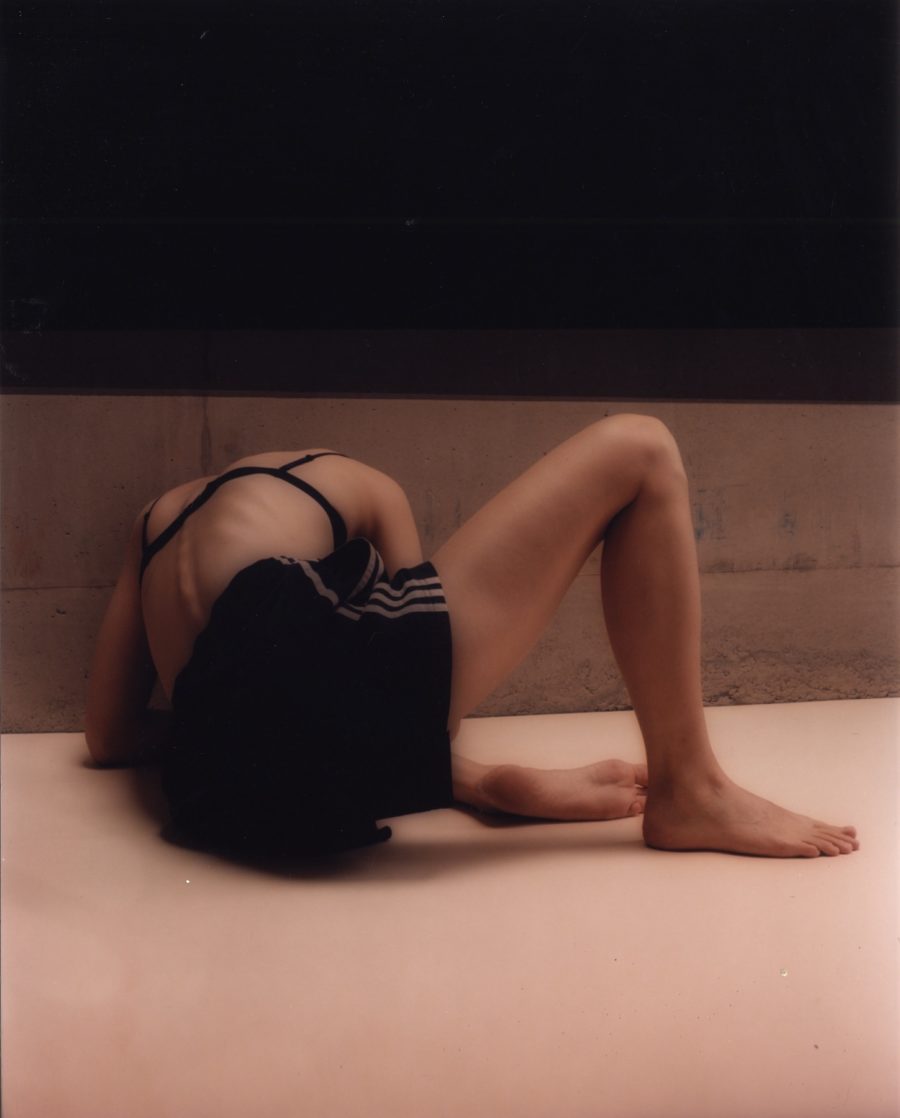Two years since his dramatic separation from artistic partner Adam Broomberg, Oliver Chanarin reflects on collaboration, consent, and his new book


Two years since his dramatic separation from artistic partner Adam Broomberg, Oliver Chanarin reflects on collaboration, consent, and his new book


On the opening day of Broomberg & Chanarin’s posthumous retrospective at Catalan contemporary art centre Fabra i Coats, Barcelona, Sean O’Toole reflects on the duo’s rich career, replete with experimentation and subversion, in light of its official end.

Media Art and Misfortune capitalises on our compulsion to online-shop by showcasing students’ work through ‘products’ reflective of their wider practices

An online photography publication interrogating the notion of absence, by students at The Royal Academy of Art, The Hague, takes on new significance in the context of Covid-19

Chanarin was poised to embark on a photographic survey of Britain for an installation at SFMOMA, however, confined to his apartment, the artist turned his lens on his partner Fiona Jane Burgess instead. Inspired by August Sander’s photograph the Painter’s Wife, Chanarin has made hundreds of portraits of Burgess at home during lockdown

Yuel Elob just saved up to buy a fixie bike, “just for fun, because I love cycling so much”. Daniel loves music and DJ-ing. Bada Yusuf volunteered at Pride’s pop-up shop last year, and met a group of people who are now “all friends, and I have parties at my house”. They sound like typical young Londoners but their stories are anything but – war and persecution meant all three were forced to leave their countries, and start again from scratch in London. Even so all three have found jobs, and Yusuf has nearly finished a Masters.
They feature in an exhibition called Breaking Barriers, which aims to show “the dreams and challenges faced by refugees in the UK”. Co-curated by Rebecca McClelland, who spent seven years as a photographic editor at The Sunday Times Magazine before becoming the New Statesman’s first photographic lead, the show features portraits by world-famous image-makers such as Diana Markosian, Nick Waplington, Adam Broomberg and Oliver Chanarin.

Les Rencontres d’Arles is the most prestigious photo festival in the world – that’s beyond question. But according to a high-profile group of photographers, curators, and writers, there’s still more that it could do. They’ve got together to sign a public letter to festival director Sam Stourdzé, which urges him to include more exhibitions by women in the main programme at Arles, and which was published in the French newspaper Libération on 03 September.
The letter is signed by influential industry figures such as Iwona Blazwick, director of the Whitechapel Gallery; Victor Burgin, Professor Emeritus of History of Consciousness, University of California, Santa Cruz, and Emeritus Millard Chair of Fine Art at Goldsmiths College, University of London; collectors Claire and James Hyman; and Olivier Richon, Professor of Photography, Royal College of Art, London, as well as photographers and artists such as Clare Strand, Sunil Gupta, and Anna Fox.

“I became interested in photography in the late 1940s and began to look at magazines such as Life, Look, and Picture Post,” David Goldblatt told Colin Pantall, writing for BJP in 2013. “In the early 1950s, I tried to become a magazine photographer. I sent my pictures to Picture Post and got rejected. Then, when the African National Congress became active in their struggle against apartheid, Tom Hopkinson, the editor of Picture Post, contacted me and asked if I could make something. So I went to an ANC meeting and photographed everything I saw. That was in 1952.
“I shot and I shot and I shot and then I realised that I was using a long roll of film – film that had failed to engage on the sprocket of the Leica I was using. It was an incredibly basic mistake. But the other thing I realised was that I wasn’t really interested in what was happening around me.
“After the ANC meeting, I discovered I had to understand what I was competent in and what I was interested in. That took some years to probe, until I could get to the underbelly of the society that underlay South Africa. And to understand it visually, I also had to get a grasp on the history of the country. So I did a degree, which included courses in English and economic history. This taught me how to think and understand what was happening around me.
“My father died in 1963. I was 32 with three children and a family, but I sold the shop [the family business] and, with a couple of Leicas and the capital to keep on going for a year, I became a full-time photographer.”

The 18-year-old Hamburg Triennial will be directed for the second time by Polish curator Krzysztof Candrowicz, who moved to Hamburg four years ago and set about transforming the it, bringing people and institutions together, and determined to make it more relevant to the viewing public. The 2015 edition was, he says, “The first holistic attempt to create the collaborative framework of the festival. Before, the museums were basically highlighting their own exhibitions, but there was no actual curatorial collective structure.” The determinedly political and environmentally-conscious theme this year was inspired by an amalgamation of many factors, he says, including spending a year “away from structured, mechanised and commercial reality”, travelling around Latin America, Nepal and India. “Breaking Point became, for me, a metaphor for rapid and sometimes unexpected transformation on a personal and global level.”